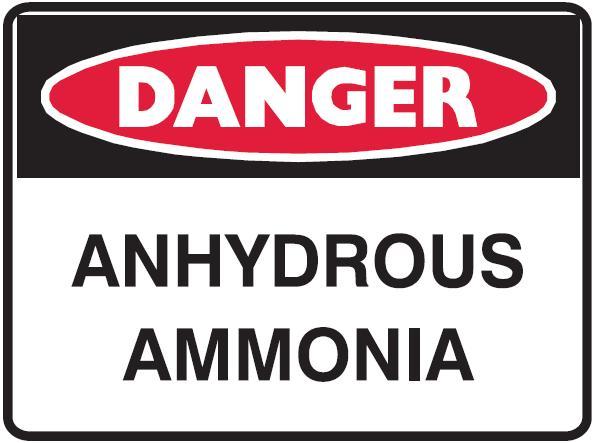 |
Anhydrous ammonia is typically used in refrigeration systems in a number of industries, including:
- Cold storage warehouses and ice plants,
- Meat, poultry, or fish processing centers,
- Dairy and ice cream plants,
- Wineries and breweries,
- Fruit/vegetable juice and soft drink processing facilities, and
- Petrochemical facilities.
Tips for Installing Anhydrous Ammonia Refrigerant Systems
- Install self-closing valves or quick-turning ball valves on tanks. These valves function as an emergency stop valve to prevent an ammonia release if the operator draining oil from the valve is overcome or must abandon the workstation.
- Provide barriers or establish safety procedures to protect refrigeration equipment (e.g., pipes, valves, evaporator coils, tanks, vessels) likely to be damaged from forklifts, hand trucks, or other maintenance.
Join us for the EPA’s Proposed NAAQS Rule for Ground-Level Ozone webinar on August 13 to identify what the EPA’s proposed rule entails. Register now!
- Install ammonia detectors to help monitor anhydrous ammonia systems for leaks. It is a good idea to install detectors in areas where a leak could occur or in an area that is not manned 24/7.
- Install a manual check valve in the ammonia charging line in a location close to the main control valve. This check valve can be used to isolate any problems associated with the main control valve and prevent release or removal of ammonia through the charging line.
- Use solenoid valves (i.e., a valve controlled by an electric current and used to control the flow of liquids and gases) on the liquid service valve (i.e., the valve downstream from the liquid line receiver) near the receiver vessel and have it operated by a manual switch located outside the compressor/recycle room. Make sure the manual kill switch is clearly recognizable by all facility personnel and emergency responders.
- Install dual pressure relief valves (PRVs) to facilitate the maintenance of relief valves. Use of dual relief valves and a three-way valve allows one relief valve to be serviced, tested, or replaced, while the other PRV remains online to protect the refrigeration equipment. This way the operator can keep the refrigeration system operational rather than needing to pump down the equipment each time a relief valve is serviced or replaced. Make sure each valve is the right size to protect the refrigeration equipment.
EPA’s Proposed NAAQS Rule for Ground-Level Ozone: What It Means and How to Prepare
Register now to learn what to do now to prepare for the EPA’s proposed NAAQS rule for ground-level ozone. Learn more.
- For larger systems with many pressure relief valves (PRVs, consider installation of a rupture disc upstream of each PRV with a gauge port or transducer in between the disc and the PRV and installation of an ammonia sensor in the PRV common manifold. In case of leakage from a PRV, the sensor would set off an alarm. A check of either the pressure gauge, rupture disc, or transducer signal would permit easy identification of which PRV has popped.
- Install emergency ventilation switches. It is best to use remote switches located near, yet at a safe distance from, the compressor room. Identify the switch(es) with signage for use in an emergency.
- Use a color-coding and/or a labeling system to ensure your facility’s engineering drawings or piping and instrumentation diagrams are up to date. This reduces the chances of errors in operating procedures.
Extra tip fyi: For ammonia, a release from a single vessel will not normally lead to a release from others unless the vessel fails catastrophically and explodes, sending metal fragments into other vessels. Colocated vessels containing ammonia, however, may well be involved in a release caused by a fire or explosion that occurs from another source.
